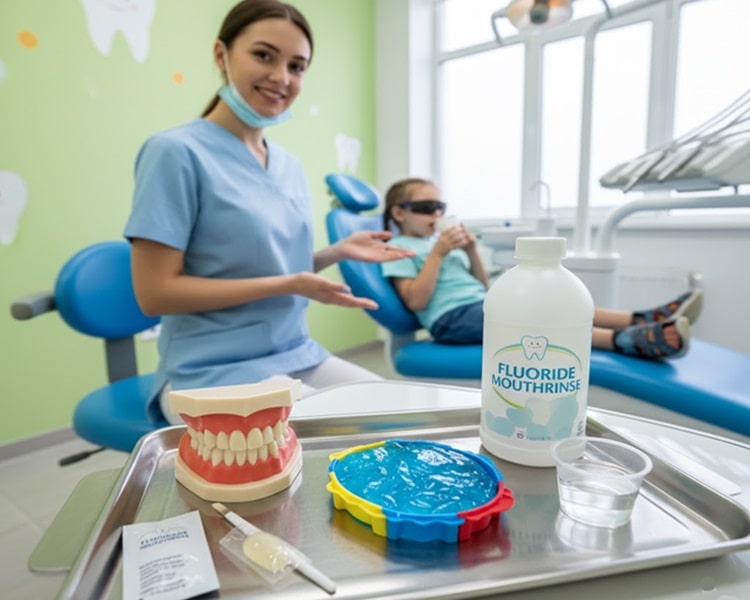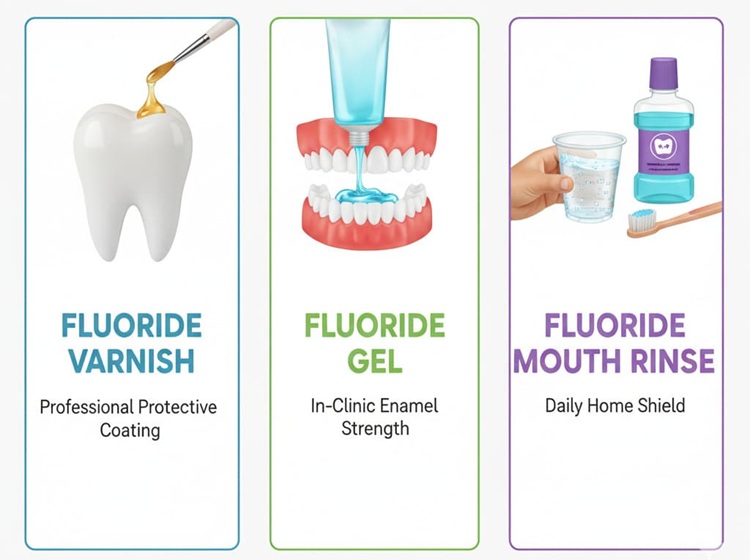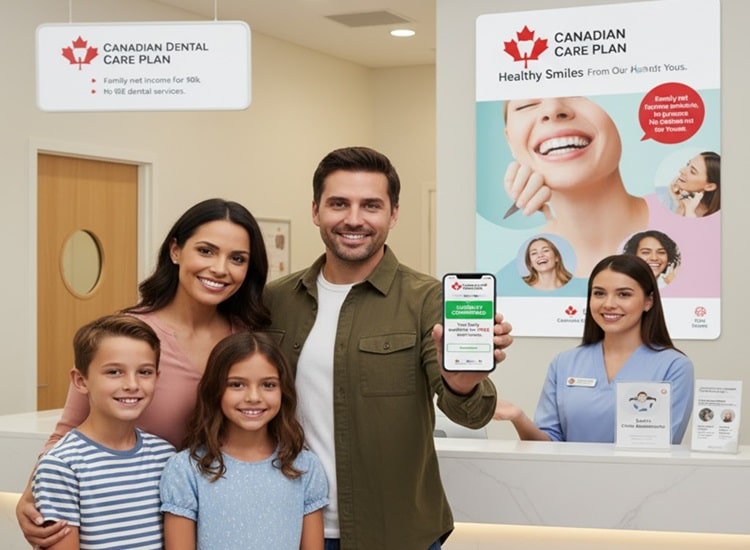Want to keep your kids’ teeth strong without spending a dime? Free fluoride treatments for kids with CDCP can help prevent cavities and boost their smile. With pediatric dentistry, Kids under certain ages and families who meet simple income rules usually qualify. We’ll break it all down so you know exactly what’s included and what steps to take.

What Are Free Fluoride Treatments for Kids with CDCP?

Free fluoride treatments for kids with CDCP are programs that help protect children’s teeth from cavities at no cost. They usually include a quick fluoride application at a dentist or clinic to strengthen enamel and keep smiles healthy. Your Family Dentist can also guide you on how often your child should receive these treatments as part of their regular dental care plan.
How Fluoride Protects Kids’ Teeth
Fluoride is a natural mineral that keeps your child’s teeth strong. It rebuilds weak enamel, blocks acid from plaque, and makes teeth resist decay. In Canada, kids get fluoride from public water, toothpaste, and dental treatments to help prevent cavities.
Noticing that your child’s teeth don’t align properly? Early care makes a big difference. Learn more about Crossbite in Kids and how it can be treated effectively.
Types of Fluoride Treatments Available

The Canadian Dental Care Plan (CDCP) offers several fluoride treatments to protect kids’ teeth:
- Fluoride varnish: A protective coating dentists put on teeth to fight cavities.
- Fluoride gel: A stronger fluoride treatment dentists apply in the dental clinic to strengthen enamel
- Fluoride mouth rinse: A gentle rinse kids can use at home for extra protection.
CDCP covers these treatments for eligible children every six months as part of preventive care.
Read more: “What’s Covered by the CDCP in 2025?”
Who Qualifies for Free Fluoride Treatments Through CDCP?

The Canadian Dental Care Plan (CDCP) gives free fluoride treatments to kids whose families meet some basic rules:
- No dental insurance: The child doesn’t have any other dental coverage.
- Family income under $90,000: Your total household income must be below this limit. But, if your income is somewhere between $70,000-$89,000, you still have to pay 40% of the fees.
- Live in Canada: The child must be a Canadian resident for tax purposes.
- Filed taxes last year: The family should have submitted a tax return the previous year.
Did you know you can check your status CDCP online? It’s now easier than ever. You only need to check the CDCP status checker.
How to Apply for CDCP Fluoride Programs
Here’s a step-by-step guide on how to apply for fluoride treatment for kids with CDCP:
Protect Your Child’s Smile Today
At My Dentist Langley, we offer expert pediatric dental care to ensure your kids’ teeth stay strong and healthy. Book an appointment and give your child the best start for lifelong oral health!
Check the Basic Rules First
Make sure your household income stays under the CDCP limit, your child has no private dental insurance, and your family files taxes in Canada. If those match, move on.
Make or Sign in To Your My Service Canada Account (MSCA)
Go to the Government of Canada site and open MSCA. Create an account if you don’t have one, then sign in to start the application.
Gather Documents
Get your Notice of Assessment (latest tax year), ID for each family member (birth certificate or passport), and any proof that shows no private dental coverage. Keep your Social Insurance Number (SIN) ready if required.
Start the Online Application
Open the CDCP application through MSCA. Enter your personal details, your spouse’s details (if any), and information for each child you add to the claim.
Upload Your Documents
Attach the Notice of Assessment and ID documents where the form asks for proof. Follow the file-type and size rules on the page.
Declare Your Dental Coverage Status
State clearly that your child has no other dental insurance. If the form asks for a signed declaration, sign and upload it.
Submit the Application
Review all fields, then submit the form. Note the confirmation number or screenshot the confirmation page for your records.
Watch for The Decision and Welcome Info
CDCP will send you a notice with approval details, a member card, and the date your benefits start. Use those details to book covered services.
Book Fluoride Visits After the Start Date
Call your dentist or clinic and book preventive care only after your benefits start. Bring your member card and ID to the appointment. Many families combine fluoride applications with regular teeth cleaning visits to maximize their child’s oral health benefits.
Keep Records and Follow Up

Save your welcome letter and receipts. If anything changes in your household (income or coverage), update CDCP through MSCA so your benefits stay correct.
Looking for a more detailed guide? Check out our article on how to apply for CDCP with additional tips.
Ready to Give Your Kids a Stronger, Healthier Smile?
Strong, healthy teeth start early, and the Free Fluoride Treatments for Kids with CDCP program helps you make that happen without extra costs. If your child needs help with alignment or bite issues as they grow, visit our Orthodontist in Langley to ensure their smile develops perfectly.
FAQ
-
Are fluoride treatments really free under the CDCP?
Yes! If your child is covered by the CDCP, fluoride treatments are fully included. You won’t pay anything as long as your dentist accepts the plan
-
How often can my child get fluoride treatments?
Most kids can get fluoride treatments once or twice a year through CDCP. Your dentist might suggest more visits if your child has a higher risk of cavities.
-
Do I need to apply separately for fluoride treatments?
Nope! Once your child is approved for the CDCP, fluoride treatments are automatically covered. You just need to show your plan details at the dentist’s office.
-
What age group does the CDCP cover for fluoride treatments?
The CDCP is for Canadian families with kids under 18, depending on income level and eligibility. The goal is to help children and teens maintain healthy smiles while they grow.
Have questions about free fluoride treatments or your child’s oral care? Leave a comment below and share your thoughts, we’d love to help!




